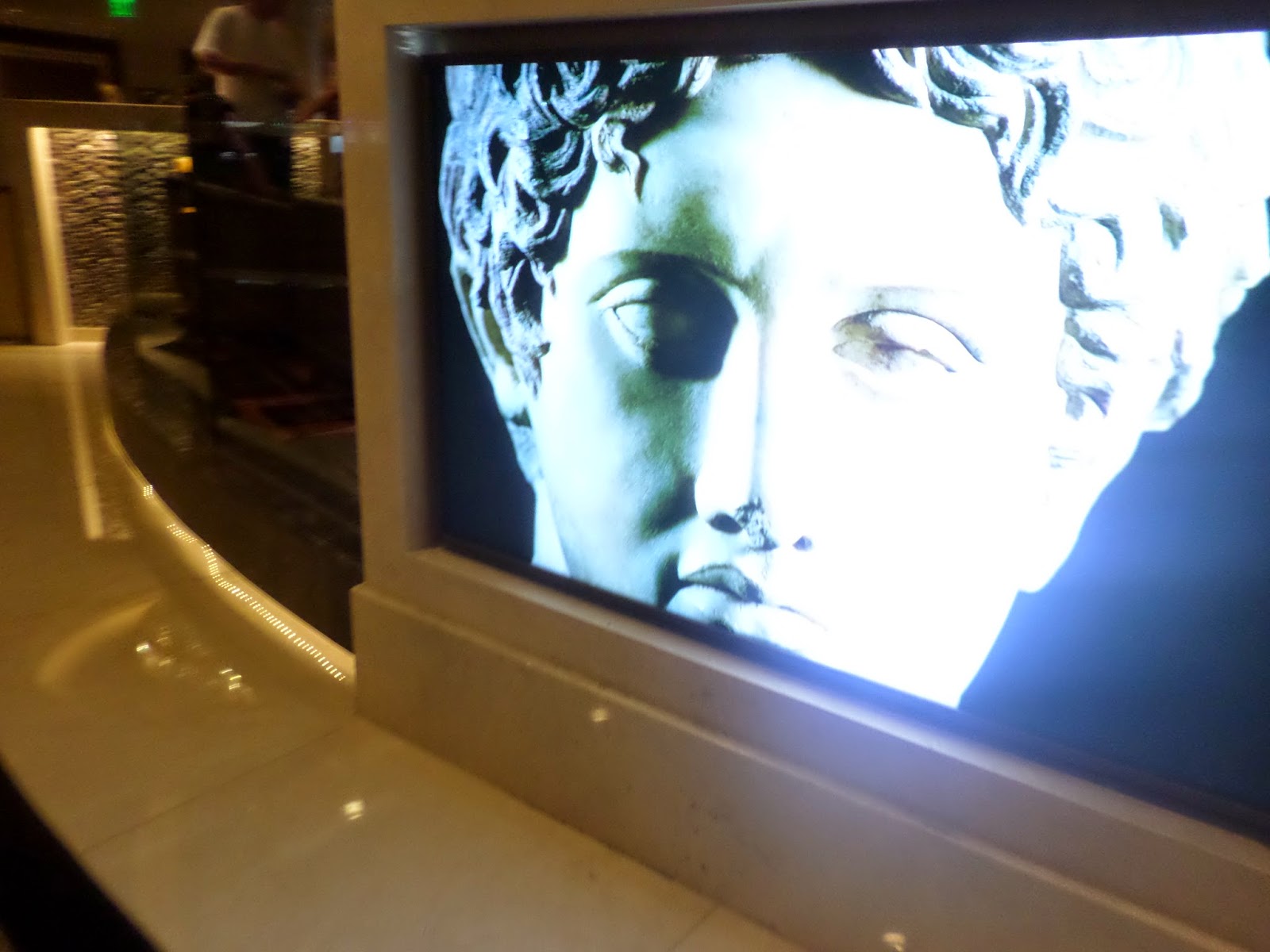Caesar's Palace Pool
This past week, I stayed at the opulent and excessive Caesar’s Palace, a mega-hotel that also includes extensive casinos, bars, pools, and restaurants. Upon entering the cacaphonic casino, one can sense the lingering smell of gently smoking cigars and the high excitement about drinking and partying from the guests. However, instead of participating in the raucous merriment, the only thoughts that occurred to me were “This place is historically incorrect!” and “Where were their art historians when they designed this pleasure palace?” Caesar’s Palace is supposed to invoke the luxury of Rome, as in circa the first century C.E. However, many of the flashy decorations were simply related to Italy and the location of Rome, not the Roman Empire specifically. Being the stickler I am about Roman history and art history, this article will explore some of the anachronisms that the designers for Caesar’s Palace unwittingly incorporated into their building.
David
First, one of the wings of the Palace included a statue of David, the marble giant crafted skillfully by Michelangelo. The cast statue (with similar dimensions to the real statue in Florence) has a prominent location under a bright oculus, which mirrors the real David’s standing position in the Accademia Galleria. However, this statue is the epitome of Renaissance thinking and ideals. The Renaissance was at its height during the 1500s, and it advocated perfection, idealism, neo-platonic shapes, geometry, perspective, and sfumato. Why is David lurking in Caesar’s Palace, the building that is supposed to echo Ancient Rome? Just because it is connected with Italy doesn’t mean it is Roman or Ancient. The actual David statue was sculpted around 1502, while the height of the Roman Empire occurred under Trajan around 100 C.E. This statue is obviously a manicured addition to the edifice, but it doesn’t accurately portray the Ancient Roman vibe that Caesar’s Palace is trying to emanate. The cast statue belongs in hotels named “Michelangelo’s Man-Cave” or “Leonardo’s Lair.” Additionally, in one of wings of the noisy casino, a portion of the famous Sistine Chapel was shown near the ornate roof. The side panels depicting legendary sibyls and prophets are in the high Renaissance style and were painted unwillingly by Michelangelo around 1510. Just for a nugget of educational fun, the prophet Isaiah is modeled after Michelangelo’s own face.

|
| Venus de Milo |
Second, there are a host of Hellenistic and late Classical statues that adorn the smoky and garish casinos of the Palace. The first statue (which was on a fluorescent screen) was the Venus de Milo, the famous marble woman seemingly lacking arms. However, this statue, carved by Praxiteles around 150 BCE, is staunchly Greek. The Roman Empire hadn’t even started yet, and Alexander the Great’s influence was the most dominant and potent force in the known Mediterranean World. Venus was found on the island of Melos by French excavators in the 1800s, and she has a twisting stance and projecting knee (Hellenistic). Also characteristic of the Hellenistic golden age of Pergamon is the tendency to depict the individual, an appeal to emotions, dramatic subjects, and viewer involvement. Therefore, this statue does not belong in Caesar’s Palace shoddy casinos because (1) it is not even Roman, (2) it was made before the birth of Caesar, (3) the twisting pose and nudity is in stark contrast to the stolid Roman busts, and (4) it is disrespectful to place an artistic object of such importance in a low-down place where it is not appreciated. Caesar’s Palace also had a replication of Nike of Samothrace (also Hellenistic)in their front fountain.

|
| Face of the Apoxyomenos |
Continuing my diatribe, there were also several late classical works that adorned the glitzy surface of Caesar’s Palace. First, there was the face of “The Scraper,” or the “Apoxyomenos" in Greek. The sculpture, featuring the coolly indifferent face of the athlete, features arms breaking into the space of the viewer, a heavy forehead, and a shadow of the high classical contrapposto stance. It was tastefully created in 330 BCE by Lysippos, a sculptor who purportedly made a bust of Alexander the Great. The late classical period (coming after the building of the gargantuan Parthenon in Athens) featured taller figures, sensitive expressions, fully nude women (a scandal), smaller heads, and depictions of minor deities (as opposed to images of Zeus, Athena, Poseidon, etc). Sculptures also feature a prominent “s” curve, which differed from the more geometric high classical works. Again, this work is not Roman (it is before the birth of the Roman Empire), is completely nude, and has a whimsical air. This is in stark contrast to conservative Roman busts of Senators and fierce depictions of crueler Emperors (i.e. Caracalla and Caligula).

|
| Aphrodite of Knidos |
In the taxi pick up area, a statue of the Aphrodite of Knidos was coyly presented under a golden recess/niche next to a smaller statue of David. Again, this nude woman is late classical, not Ancient Roman. It would have been more prudent to place a statue of Livia or Faustina under the golden arch. Aphrodite (Venus) was made by Praxiteles around 350 BCE. It depicts a fully nude goddess who just stepped out of the bath. She has a well toned body (evidence of the “male gaze”) and a hand gesture that emphasizes her nudity instead of hiding it. The statue of Aphrodite was so controversial and a true landmark in western art because she was the first nude woman ever depicted in art. A popular legend has it that Aphrodite supposedly said upon seeing her statue, “When did Praxiteles see me naked?”
To conclude, Caesar’s Palace in the City of Sin is exciting, glamorous, and internationally recognized, but it needs to resurvey its pseudo-historical decorations. The marble decorations (i.e. David, Aphrodite of Knidos, The Scraper) are lovely, but they don’t quite fit the time period that Caesar’s Palace imitates.




